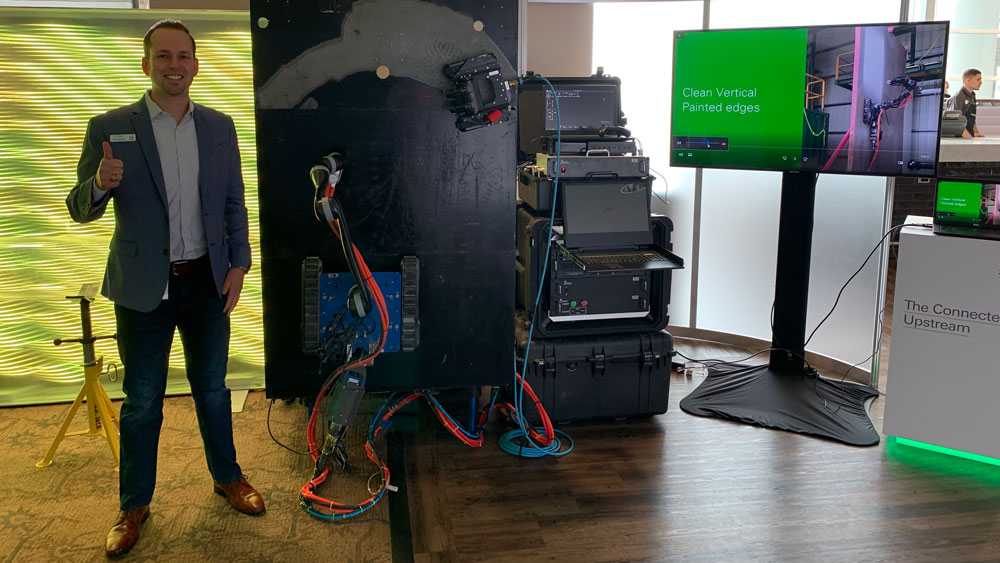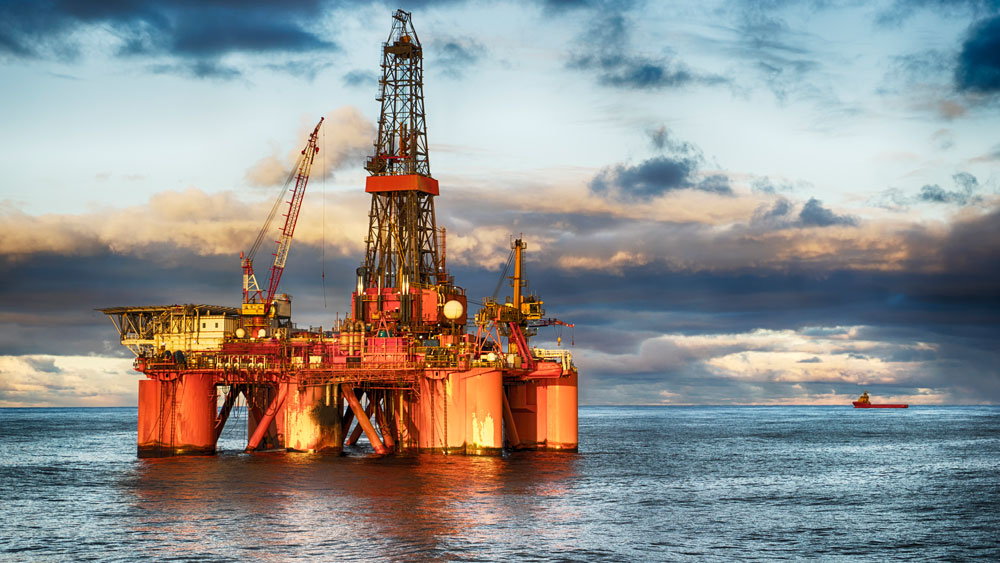
Bringing together the leaders of tomorrow with the prominent minds of today, the Senior Capstone Design program at Texas A&M University challenges student teams to tackle real-world engineering problems faced by industry.
For their project, Amanda Cheek and Melanie Vincitore, both former students of the J. Mike Walker ’66 Department of Mechanical Engineering, dove into the issues faced by offshore oil rigs, namely, how robotics could aid in painting on a corrosion-resistant coating to the horizontal, vertical and curved surfaces on oil rigs.
Their project, now being prototyped by BP, aimed to reduce the risk of flaws and human error during the application of the corrosion-resistant coating – a task that is as labor intensive as it is important.
“Flaws in the coating are a significant issue because applying the coating takes a very long time and can be tedious for operators to perform,” said Cheek.
“An autonomous robot would mitigate this risk and remove the need for operators to perform this task,” said Vincitore.
As Cheek and Vincitore explained, coating flaws on oil rigs can be especially dangerous in a salt water environment because salt water is highly corrosive and will quickly damage and break down rig assets if they are not properly protected. This has the potential to endanger workers’ lives and the integrity of the structure.

To combat this, the team designed an autonomous robot that could navigate the surfaces of an oil rig — much like how a pool cleaner traverses the curves and edges of a pool — and paint on the protective coating.
“Safety was a large factor. The design could not be a source of ignition or a safety hazard to workers (and) had to be robust since finding spare parts is not a feasible option in the middle of the ocean,” said Vincitore.
In addition to developing a tested design for BP to use, the team also made recommendations on building materials for the robots, where the equipment and sensors should be located, and how the robot should operate. As such, they reported and demonstrated the potential capabilities and limitations of a robotic painter and the impact it could have on worker safety, as well as the reduction of risk and repair costs caused by human error.
“It feels so good to know that our project is being utilized by BP, an industry leader. It was a daunting project that we are very proud of. We hope to see it one day in the future of the industry,” said Cheek.
“(Senior Capstone Design) taught me how to work and communicate with team members, manage time and communicate with stakeholders to correctly identify project needs,” said Vincitore. “It’s great to know that all of the hard work we put in has paid off and we were able to identify and satisfy the objectives that BP desired for a very broad and challenging project.”
A global leader in oil, gas and energy, BP manufactures and markets energy, fuels and raw materials used in everyday products ranging from cellphones to food packaging to automobiles. Implementing cutting-edge technologies and engineering advancements, the impact of the company and their brands can be seen around the world.
In addition to being experts in the industry, BP supports the education and cultivation of student experiences. They have partnered with the Senior Capstone Design program at Texas A&M multiple times – their expertise and support helping to give students valuable insight and opportunities now and into the future.
“Partnering with Texas A&M to sponsor capstone projects has been impactful of BP,” said Collin Kleypas ‘11, a subsea engineer at BP and former mechanical engineering student. “I believe the program is a win-win learning opportunity. Students gain experience of what it is like to work on a real engineering project in our industry, while our company has the opportunity to understand the competency (and) capability of graduating engineers – something that is continuously increasing.”
Learn more about how to get involved with the mechanical engineering Senior Capstone Design program.